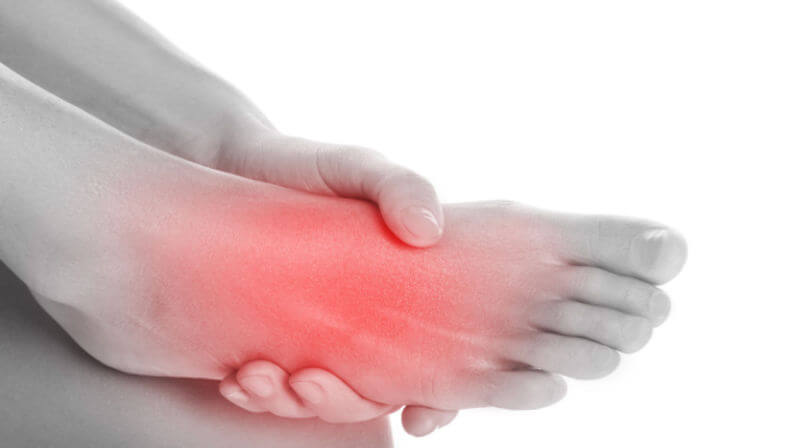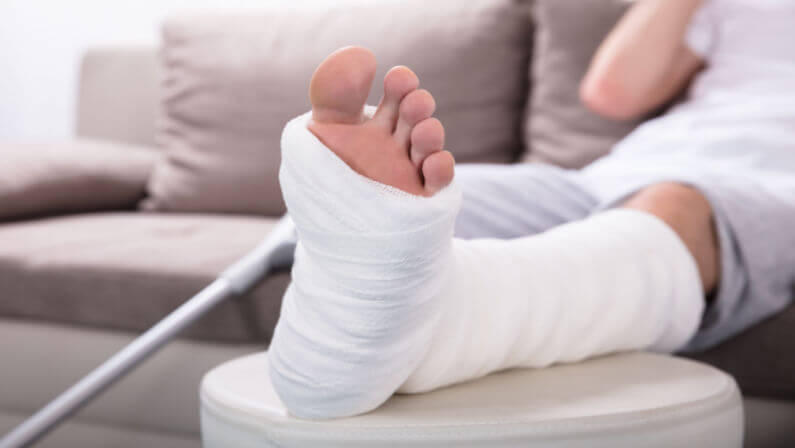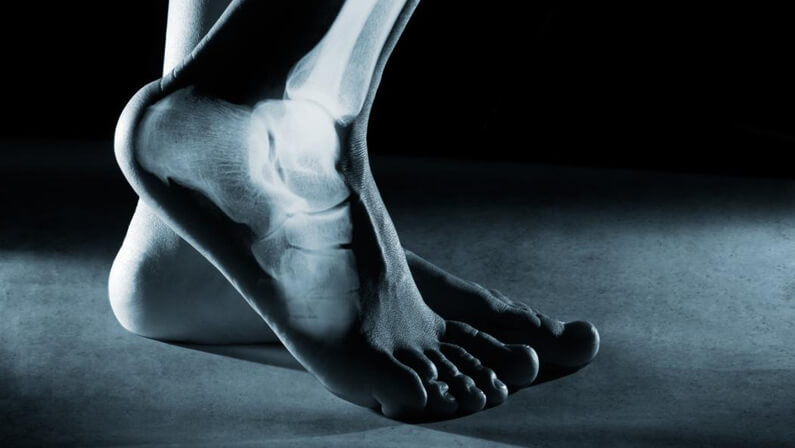Hairline fractures are common injuries that can occur in the bones of the foot. They are small cracks in the bone and can be difficult to detect without proper medical attention.
Hairline fractures are types of fractures that can be caused by repetitive stress on the foot or by a sudden increase in physical activity.
In this article, we will explore the causes, symptoms, and treatment options for hairline fractures in the foot.
What Is A Hairline Fracture?
A hairline fracture, also known as a stress fracture, is a small crack in a bone that often results from repetitive stress or overuse.
Unlike a complete fracture, which is a break in the bone that causes it to separate into two or more pieces, a hairline fracture is usually a minor injury that does not entirely displace the bone.
However, if left untreated, a hairline fracture can worsen and lead to more severe complications, such as a complete fracture or chronic pain.
Who Are Most At Risk For A Hairline Fracture?
Hairline fractures are common in the foot bones, particularly in athletes or people who engage in repetitive motions, such as running or jumping. They can also occur due to an abrupt increase in physical activity, such as starting a new exercise routine or increasing the intensity of an existing one.
Depending on their location and severity, hairline fractures may cause mild to moderate pain, swelling, tenderness, and difficulty bearing weight or walking.
What Are The Causes Of Hairline Fracture?
Hairline fractures are caused by repetitive stress, sudden impact, or weakening of the bones due to age, medical conditions, or nutritional deficiencies.
Improper Equipment

Using improper or ill-fitting equipment, such as shoes, can lead to hairline fractures by increasing the pressure and stress on specific foot areas, especially during physical activities. It’s essential to wear appropriate and comfortable gear to prevent injuries.
Poor Conditioning
Lack of physical conditioning, such as weak muscles or poor flexibility, can put more strain on the bones and increase the risk of hairline fractures. Gradual and consistent exercise and stretching can help improve the strength and flexibility of the muscles and reduce the likelihood of injury.
Bone Insufficiency
Conditions that weaken the bones, such as osteoporosis, can make them more susceptible to hairline fractures. A diet rich in calcium and vitamin D, regular exercise, and medical treatment may help prevent or manage bone insufficiency.
Improper Technique
Using improper form or technique during physical activities, such as running or jumping, can increase the pressure and stress on the bones and cause hairline fractures. Proper training and practice can reduce the risk of injury and improve performance.
Change in Surface
A sudden change in the surface or terrain, such as running on a hard or uneven surface, can cause hairline fractures by increasing the impact and stress on the foot. Gradual adaptation to new characters and proper footwear can help prevent injuries.
What Are The Symptoms Of A Hairline Fracture?

Here are the tellings signs that you might be having this condition:
- Pain. It causes mild to severe pain and usually worsens with physical activity or pressure on the affected area. A dull ache or throbbing sensation may also accompany the pain.
- Swelling. It causes swelling, tenderness, or bruising around the affected area, indicating inflammation and tissue damage.
- Limited mobility. Depending on its location and severity, a hairline fracture makes it challenging to bear weight or move the affected limb. This can lead to stiffness, muscle weakness, or instability.
- Numbness or tingling. It compresses or irritates the nearby nerves, causing numbness or tingling sensations in the affected area.
- Change in skin color. It also causes the skin to turn red, blue, or purple around the affected area due to inflammation and blood vessel damage. This may also be accompanied by warmth or fever.
- Difficulty sleeping. A hairline fracture causes pain and discomfort hairline fractures can disrupt sleep patterns and cause insomnia or fatigue, affecting overall health and well-being.
How are Hairline Fractures Diagnosed?
Hairline fractures are diagnosed through physical examination, X-rays, MRI scans, and nuclear bone scans.
Physical examination
A doctor will usually examine the affected area and check for signs of pain, swelling, tenderness, and limited mobility. They may also ask about the patient’s medical history and any recent physical activity that may have caused the injury.
MRI
Magnetic resonance imaging (MRI) uses a magnetic field and radio waves to produce detailed images of the bones and soft tissues. This imaging test can help detect hairline fractures that may not appear on X-rays or other imaging tests. It can also provide information on the severity and location of the injury.
X-ray
X-rays use radiation to produce images of the bones, which can help identify hairline fractures and other types of bone injuries. However, hairline fractures may not be visible on X-rays immediately after the injury, and multiple X-rays may be needed to confirm the diagnosis.
Nuclear bone scan
A nuclear bone scan involves injecting a tiny amount of radioactive material into the bloodstream, which is then absorbed by the bones. Unique cameras can detect the radiation emitted by the bones and create images to help diagnose hairline fractures and other bone abnormalities. This test is usually used when other imaging tests are inconclusive.
What are the Treatments for a Hairline Fracture in the Foot?
The treatment options for hairline fractures in the foot include rest, immobilization, pain management, physical therapy, and surgery in severe cases.
Home treatments (Rice method)
Home treatments, such as the RICE method, can help manage the pain and promote the healing of hairline fractures in the foot. RICE stands for Rest, Ice, Compression, and Elevation.
- Rest. It involves avoiding activities aggravating the injury and allowing the foot to heal. Crutches or a walking boot may be needed to reduce weight-bearing on the affected foot.
- Ice. It helps reduce pain and swelling. Applying an ice pack or a cold compress to the affected area for 15-20 minutes several times a day can help reduce inflammation and promote healing.
- Compression. Reduces swelling and provides support to the foot. An elastic bandage or compression sock can help reduce swelling and support the affected area.
- Elevation. It involves keeping the foot above the heart level as much as possible. This can help reduce swelling and improve blood flow to the affected area.
It’s essential to consult a doctor before starting home treatments, especially if the pain persists or worsens despite these measures. Sometimes, hairline fractures may require more aggressive treatments, such as immobilization or surgery, to promote healing and prevent complications.
Medical treatments
Medical treatments for hairline fractures in the foot may include pain management, immobilization with a cast or brace, physical therapy, and in severe cases, surgery.
- Nonsurgical Treatment. This treatment option for hairline fractures in the foot involves conservative management with rest, immobilization, pain management, and physical therapy to promote healing without surgery.
- Surgical Treatment. In severe cases where nonsurgical treatment fails, surgical treatment may be necessary to repair or stabilize the fracture, which can involve using metal screws, plates, or wires to hold the bones in place and promote healing.
If you have this condition, don’t hesitate to head to Aether Health – SilverLake ER for medical care. Our specialists at Aether Health – SilverLake ER will determine what type of treatment you should undergo.
Contact us to learn more about the treatments for hairline foot fractures.
How Long Does It Take To Recover A Hairline Foot Fracture?

The recovery time for a hairline foot fracture can vary depending on the injury’s severity, the fracture’s location, and the individual’s overall health and healing ability.
Generally, it can take several weeks to several months for a hairline foot fracture to heal fully.
Following your doctor’s treatment plan, resting the affected foot, and avoiding activities that could aggravate the injury is essential during this time. Additionally, physical therapy may be recommended to help restore strength and mobility to the foot and prevent future injuries.
How To Prevent Hairline Fracture In The Foot?
One can maintain good bone health, physical activity, and a generally healthy lifestyle to prevent hairline fractures in the foot.
- Get proper nutrition. A balanced diet rich in calcium, vitamin D, and other essential nutrients can help maintain good bone health and reduce the risk of hairline fractures in the foot.
- Use proper footwear. Wearing shoes that fit correctly and provide adequate support and cushioning can help reduce the risk of foot injuries, including hairline fractures.
- Add strength training to your workout. Incorporating strength training exercises into your workout routine can help strengthen the muscles and bones in your feet and reduce the risk of hairline fractures.
- Stop your activity if pain or swelling returns. If you experience pain or swelling during or after physical activity, it’s vital to stop the activity immediately and rest to prevent further injury.
- Cross train. Engaging in various physical activities can help prevent overuse injuries and reduce the risk of hairline fractures in the foot.
- Start new activities slowly. Gradually increasing the intensity and duration of new physical activity can help prevent overuse injuries and reduce the risk of hairline fractures in the foot.
When Should You Go To The Emergency Room For A Hairline Fracture
You should go to the emergency room for a hairline fracture in the foot if you experience severe pain, swelling, difficulty bearing weight on the affected foot, or if you suspect a bone may be broken or displaced.
Additionally, seek medical attention immediately if you experience numbness or tingling in the foot or if the skin around the fracture site appears pale or blue.
Get Immediate Treatment for Hairline Fracture in Foot
If you are experiencing symptoms of a hairline fracture in your foot, it’s essential to seek medical attention as soon as possible to prevent further injury or complications.
At Aether Health – SilverLake ER, our experienced medical team is equipped to provide prompt and effective treatment for hairline fractures and other foot injuries.
Be sure to get back on your feet before your condition worsens — trust Aether Health – SilverLake ER to provide the high-quality care you need to get back on your feet.




